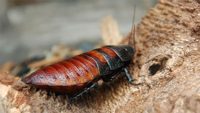A CMI supporter writes in with a comment about the assumptions made behind the method of carbon 14 dating. …read more Source: creation.com
New evidence the Greenland ice sheet is younger than previously thought …read more Source: creation.com
How Noah’s Flood formed this fascinating feature. …read more Source: creation.com
By Ken Ham News headlines (like those on CNN) around the world recently loudly proclaimed that signatures of life had been discovered on the hot, gaseous planet second from the sun, Venus. But do these headlines accurately represent the study (a question we always need to ask when we see a headline!)? Have hints of life really been discovered on Venus? The attention-grabbing headlines don’t accurately convey what the study discovered, and no: hints of life have not been found on Venus. Well . . . no and no. As one famous person would say: “fake news.” The attention-grabbing headlines [More]
How does Earth’s atmosphere compare to those of other planets and what bearing does this question have for the creation versus evolution question? …read more Source: creation.com
Is the Hydroplate theory of Noah’s Flood the strongest Flood model on offer today? …read more Source: creation.com
Bug benefiting boat design …read more Source: creation.com
How the green algae Chlamydomonas reinhardtii demonstrates multicellularity is a design feature. …read more Source: creation.com
Noah’s Flood explains Hopewell Rocks, Canada …read more Source: creation.com
The evolutionary model of brain development predicted that the complexity of neural connectivity should have increased as brains became larger and the creatures more complex. However, a groundbreaking study has just been published showing that, across the spectrum of mammals, the levels of brain activity are equally complex.1,2 In other words, mammalian brain connectivity and its amazing complexity appeared suddenly and fully functiona… More… …read more Source: icr.org
By Dr. Steven W. Boyd Genesis 8:5–13 reveals the character of Noah and delimits the time of the water’s becoming powerful to between 16 and 23 days after the Flood began. …read more Source: AIG Daily
By Dr. Steve Austin We should remember an important fact—creationist and evolutionist thinking about spillover continues to make a significant contribution to our understanding of erosion of Grand Canyon. …read more Source: AIG Daily
By Dr. Danny R. Faulkner Another SSSB (asteroid or comet) discovery suggests the existence of the Oort cloud or Kuiper belt . . . or does it? …read more Source: AIG Daily
Chemical researchers copy enzyme design and tweak it. Is this really evolution in action? …read more Source: creation.com
Was it by rafting or continental drift? …read more Source: creation.com
By Dr. Don DeYoung The peregrine falcon comes equipped with all the necessary technology to defy deadly speeds. …read more Source: AIG Daily
Candid evolutionists have publicly recognized the obvious: natural selection is a process of elimination, not creation. …read more Source: creation.com
Is a dinosaur still a dinosaur if it has flight feathers? A new study points to some fascinating evidence that contradicts the idea of feathered dinosaurs and confirms created kinds. It’s no secret that birds fly in order to, among other reasons, get food and avoid becoming food. For that, they must have their feathers arranged in good order. But feathers wear out. If birds replaced their feathers haphazardly, for example, to… More… …read more Source: icr.org
Tetragonula carbonaria are stingless bees that build complex spiral brood combs. Scientists have likened these to crystals, but bees are far more complex than crystals. …read more Source: creation.com
By Dr. Georgia Purdom Many people think of the skeletal structure as static, but as our ribs show, they are some of the most dynamic structures in our bodies. …read more Source: AIG Daily
By Heather Brinson Bruce Meerkat clans were working together in southern Africa long before Mark Zuckerberg and Jack Dorsey came on the scene. …read more Source: AIG Daily
It may not need tectonics or climate change. …read more Source: creation.com
Brain researchers from San Diego State University have just reported digitally capturing the dense folds of a preserved human cerebellum using a high resolution MRI device.1 Once thought to merely coordinate rote body movements, these brain folds contain newly revealed design features that challenge conventional concepts of where the human brain came from. The cerebellum, which literally in Latin means “tiny brain,… More… …read more Source: icr.org
By Dr. Elizabeth Mitchell Evolutionists have speculated embryos replay the evolutionary history of their species as they develop – but this is demonstrably false. …read more Source: AIG Daily
A new way of looking at your world. …read more Source: creation.com
Exciting rock formations show that fossils form naturally much faster than we are conditioned to believe. …read more Source: creation.com
By Rich Wendling Shy, gentle, and easy to care for — does the hissing cockroach sound like an ideal pet? …read more Source: AIG Daily












































